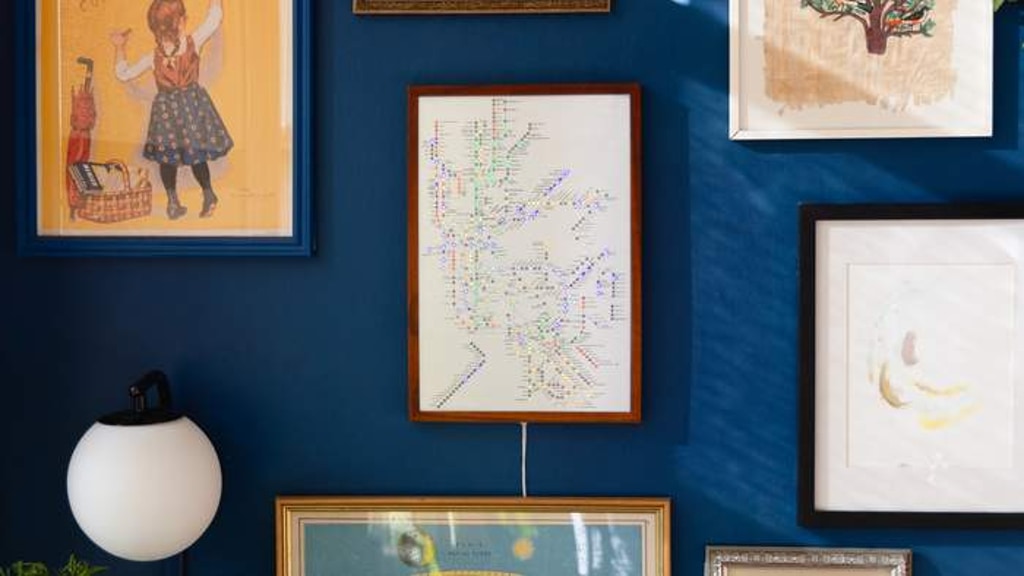Help us review the final Metroboard maps!
8 days ago
– Mon, Nov 25, 2024 at 08:22:28 AM
Hi all!
As we prepare for production, we're finalizing the maps that are printed on each Metroboard. These maps are what label each station, track, and illustrate the interconnections between them.
We've done our very best to make these accurate, but nobody knows these systems better than the people who use them every day!
In an effort to make sure these are all as accurate as possible and to give you the opportunity to provide feedback on them, we wanted to invite you to review and provide comments on them.
If you're interested, please visit here to view the maps and provide comments. You can put a comment anywhere on the map, and all six Metroboard maps are included. FYI, this is a lot easier on a computer than a phone.
as a thank you...
we'll be sending some free trading cards to anyone who helps us identify errors or provides thoughtful feedback that makes it into the final version!
THANK YOU ALL FOR MAKING METROBOARD A REALITY!
about 1 month ago
– Thu, Oct 31, 2024 at 12:59:15 PM
HELLO EVERYONE, AND THANK YOU SO MUCH!!
When we first embarked on this project just about a year ago, we never could have anticipated the excitement, interest, and upswell of support we'd experience in sharing it publicly. Over the course of the campaign, almost 6,000 of you have pledged close to $1m to support us in bringing Metroboard to reality - we cannot possibly express how grateful we are.
We take your support and your trust in us more seriously than anything else - and so we'll work hard at providing updates and keeping you in the loop over the next few months as we get Metroboard made and get it delivered to you.
Next Steps
Payment
Over the next 2-3 weeks, Kickstarter will be transferring your pledge funds to us. In that time, they may contact you via email to update payment information if the charge has failed (there will also be an "Action Needed" banner on your Kickstarter account if you check it). Be sure to keep an eye out for emails from Kickstarter, as they are in charge of verifying payment, not us! If your payment declines and your pledge is dropped, we won't be able to add you back into the campaign.
If you do receive an email from Kickstarter or see the "Action Needed" banner on your account, you will be guided through the following steps:
- Verifying your credit card information, including expiration date, credit card number, name on the card, and the card's security code
- Reviewing and confirming your billing address
- Ensuring you haven't exceeded your card's credit limit
If all the information is correct but your pledge still can't be processed, it's possible that your bank has put the charge on hold. If this happens, you can contact your bank directly to approve the charge. Right now we can see that 163 accounts have pending charges.
If you encounter any further payment issues, please contact the Kickstarter support team at www.kickstarter.com/contact
Choosing your Metroboard city (or cities)
Once all payment verification has completed, you will receive an e-mail survey that will ask you to select which city (or cities) you'd like for your Metroboard(s), and potentially a few other questions. So for now, please just: keep an eye out on your inbox for an e-mail from us about selecting your city. We expect to send this within the next two weeks.
Updates
We'll be providing regular updates on progress for getting Metroboard made so you can stay aware of how things are coming along. We will definitely post these here on Kickstarter, but may also provide a direct-to-email option in case this is not everyone's method of choice.
Over the next few weeks, we're anticipating the following milestones and corresponding updates:
-
Final Prototype Validation (verify our updated light diffuser, rear buttons, and overall assembly is high quality and good to go)
-
Prepare Mass Production Order (we'll send all final design files to our contract manufacturing partner, who will prepare the final order quote)
-
Send Trading Cards to Production (these are fully ready to rip; we'll get these sent out soon to be made!)
-
Start City Sounds production (we're working with our partner musician(s) to create samples in November, most tracks in Dec, and press the vinyl in Jan)
Interim Gift
Many of you have told us that you're getting Metroboard as a gift for someone, either for the holidays, a birthday, or other special occasion. We're so thrilled and honored to be such a special gift for so many of you.
Since Metroboard ships in March, we do want to offer a sort of "interim gift" that you can give your recipients in the meantime that can act as a cool stop-gap until they receive Metroboard itself.
We'll be providing more details on this gift, what it'll look like, and details for ordering it in the next couple of weeks.
Thank you all again for your support - excited to finish out this journey with you all over the next few months!

